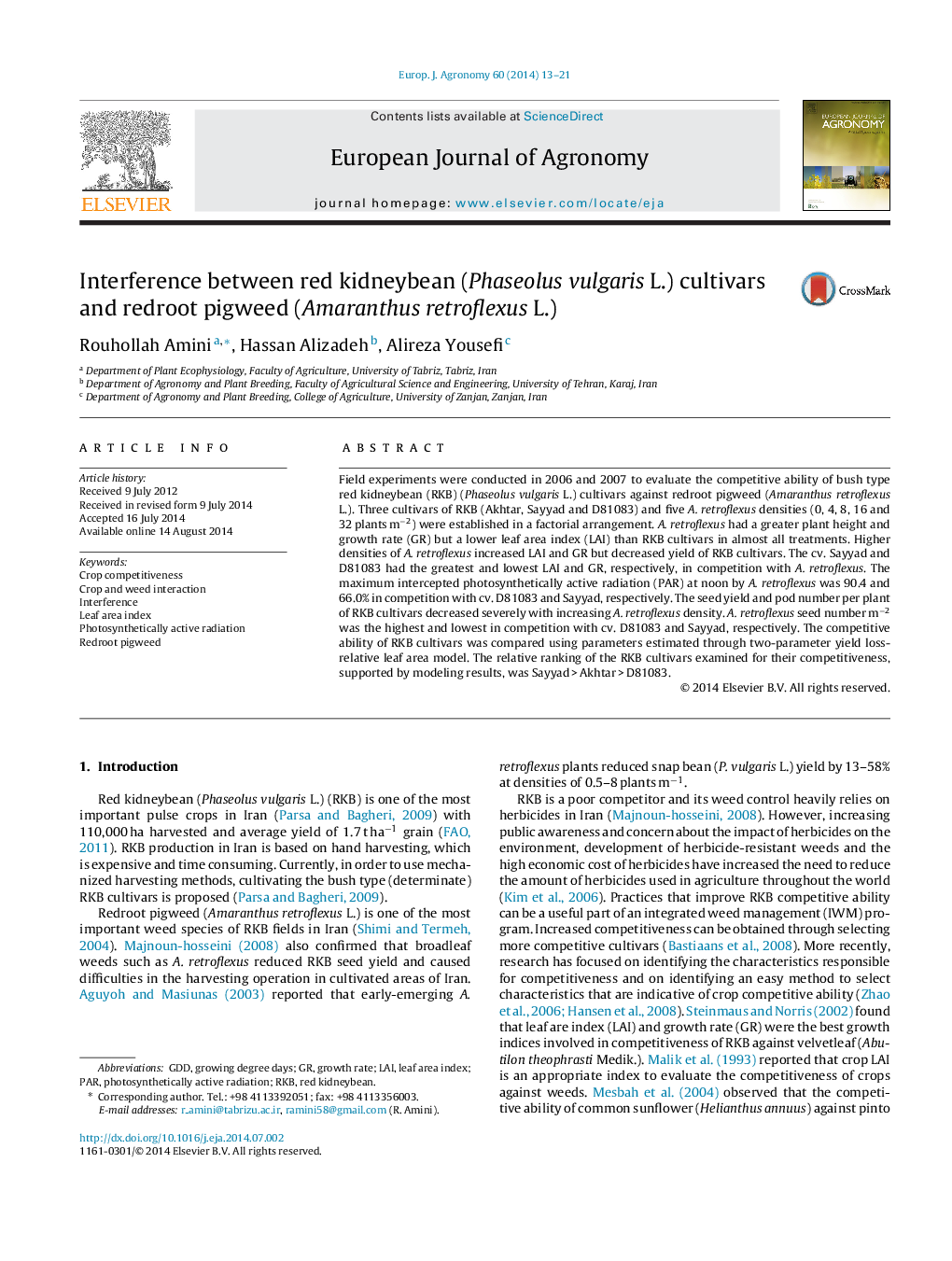| Article ID | Journal | Published Year | Pages | File Type |
|---|---|---|---|---|
| 4508873 | European Journal of Agronomy | 2014 | 9 Pages |
•The growth indices confer competitiveness of red kidneybean cultivars.•Cultivar with high competitive ability reduced redroot pigweed seed production.•We compared cultivars with two-parameter yield loss-relative leaf area model.•PAR interception of redroot pigweed was affected by red kidneybean.•For all red kidneybean cultivars the q parameter was >1.
Field experiments were conducted in 2006 and 2007 to evaluate the competitive ability of bush type red kidneybean (RKB) (Phaseolus vulgaris L.) cultivars against redroot pigweed (Amaranthus retroflexus L.). Three cultivars of RKB (Akhtar, Sayyad and D81083) and five A. retroflexus densities (0, 4, 8, 16 and 32 plants m−2) were established in a factorial arrangement. A. retroflexus had a greater plant height and growth rate (GR) but a lower leaf area index (LAI) than RKB cultivars in almost all treatments. Higher densities of A. retroflexus increased LAI and GR but decreased yield of RKB cultivars. The cv. Sayyad and D81083 had the greatest and lowest LAI and GR, respectively, in competition with A. retroflexus. The maximum intercepted photosynthetically active radiation (PAR) at noon by A. retroflexus was 90.4 and 66.0% in competition with cv. D81083 and Sayyad, respectively. The seed yield and pod number per plant of RKB cultivars decreased severely with increasing A. retroflexus density. A. retroflexus seed number m−2 was the highest and lowest in competition with cv. D81083 and Sayyad, respectively. The competitive ability of RKB cultivars was compared using parameters estimated through two-parameter yield loss-relative leaf area model. The relative ranking of the RKB cultivars examined for their competitiveness, supported by modeling results, was Sayyad > Akhtar > D81083.
